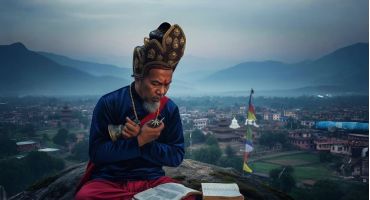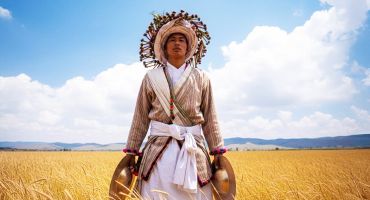On the foothills of the beautiful towering mountainside in Central East Nepal, the Upper Helambu Highlands are tucked up against the massive Himalayas and ringed by jungle-covered hills on all sides. This is home to the Hyolmo or Yolmo people, a small tribe, who may look traditionally Tibetan at a glance but actually hold a distinctive individual identity and story. The Helambu Highland which actually derives its name from the Hyolmo people themselves is also one of the best trails for trekking and features regularly in Nepal’s tourism posters and rosters yet the people who live in this region remain marginally unknown to Nepal and the rest of the world.
The main settlements of the Hyolmo people are Melamchi Ghyang, Tarke Ghyang, Sermathang, and Kangyul which together form the region of Helambu. Yolmo or Hyolmo is a community of people who have resided in the Helambu region for many centuries. A sizable minority also live in Darjeeling, Sikkim, and Bhutan and they refer to themselves as “Yolmopa” The term Yolmo in Tibetan means “a place of snow and glaciers”. Anthropologists like Graham E. Clark (A Helambu History) and Naomi Bishop (Himalayan Herders: Case Studies in Cultural Anthropology Series) are of the opinion that the Yolmos arrived in the Helambu region more than 300 years ago from the Kyirong region in Tibet. Their language, although similar to the Sherpas and the Tibetans, bears a close resemblance to the Kyirong-Kagate Tibetan dialect.

The Yolmos also share a strong affinity with the indigenous Tamangs and the Helambu and Melamchi regional folklore speak about Tamangs being the ones who had initially invited the Yolmos from Tibet. These regional folklores which are oral narratives are stories that explain the ritual dependence of the Tamang upon the Yolmo people because of the latter having ties with religious institutions in Tibet.
Other stories of the Hyolmo, as they communicate and narrate it, is that a powerful tantric master (probably Sakya Zangpo) would frequent between Samye in Tibet and Kathmandu, Nepal, which were power centers of tantric wisdom. Helambu became an important stopover between these two destinations thereby making it a sacred land that provided refuge between these two power centers that revolved around the legend of Yolmo Tulku Shakya Zangpo. Graham E. Clark also writes about how the Yolmo social life is influenced by the vital location of Helambu not only for pilgrimage but also as a trade route.
The Hyolmos are Buddhists with a strong background in Shamanism. Anthropologist Stephen Sparks (Ethnic Minority Development Plan) classifies the Yolmo religious belief system into two groups. One group of Yolmos practices Tibetan Vajrayana Buddhism and the other group believes in Shamanism. Their festivals include Lhosar (New Year) and Nara (which fall during the time of Hindu Dashain). The other festivals that the Yolmo people observe are Dukpa Tsechu, Hyulka Tsechu, and Torpe. Much like other hill tribal communities, harvest festivals like Udhauli and Ubhauli are also celebrated by the Yolmo people.

But while the influence of Nyingmapa Buddhism is strong among the Yolmos and defines their religious culture, it isn’t always the crux of their identity and social life. Much like various Himalayan communities, they also have a pre-Buddhist shamanistic spiritual practice. A Hyolmo Shaman is called a Bompo or Bombo, who is a significant ritual expert whose animistic role involves divination, healing, and worship of tutelary deities and divine spirits. Apart from these, a Bompo is also a myth narrator and the upholder of oral narratives passed on by divine ancestors. But there does seem to be a tussle between Shamanistic traditions and Buddhism in Yolmo society.
Much of their folklore deals with the conflict between Bompos and Buddhist Lamas. In his book Landscape, Ritual and Identity among the Hyolmo of Nepal, David Torri writes, “Particular attention is given, in those stories, to the right to perform funeral rites, which, in one way or the other, the shaman is at some point always forced to relinquish. Even today, Hyolmo Bombo, despite claiming formal adherence to Buddhism, still nurture an ambivalent and ambiguous stance towards it, keeping to their tradition, and transmitting their oral lore along continuing spiritual lineages.”

The Yolmo people have many stories to tell. Their stories define the merging of different cultural contexts to evolve into a community that has constructed their identity, their self, according to their own renditions through the ages. From the Helambu Beyul (hidden land) to a significant Himalayan tribe, Yolmo people prevail upon their lore – the verbal expressive narrative deposited in the memories of their people over countless generations. These stories, which embody their knowledge, beliefs, values and which guide their people, form the true identity of their community.





From where actual hyolmopa come in nepal?
Thank you….i always try to find articles on hyolmo people and their history